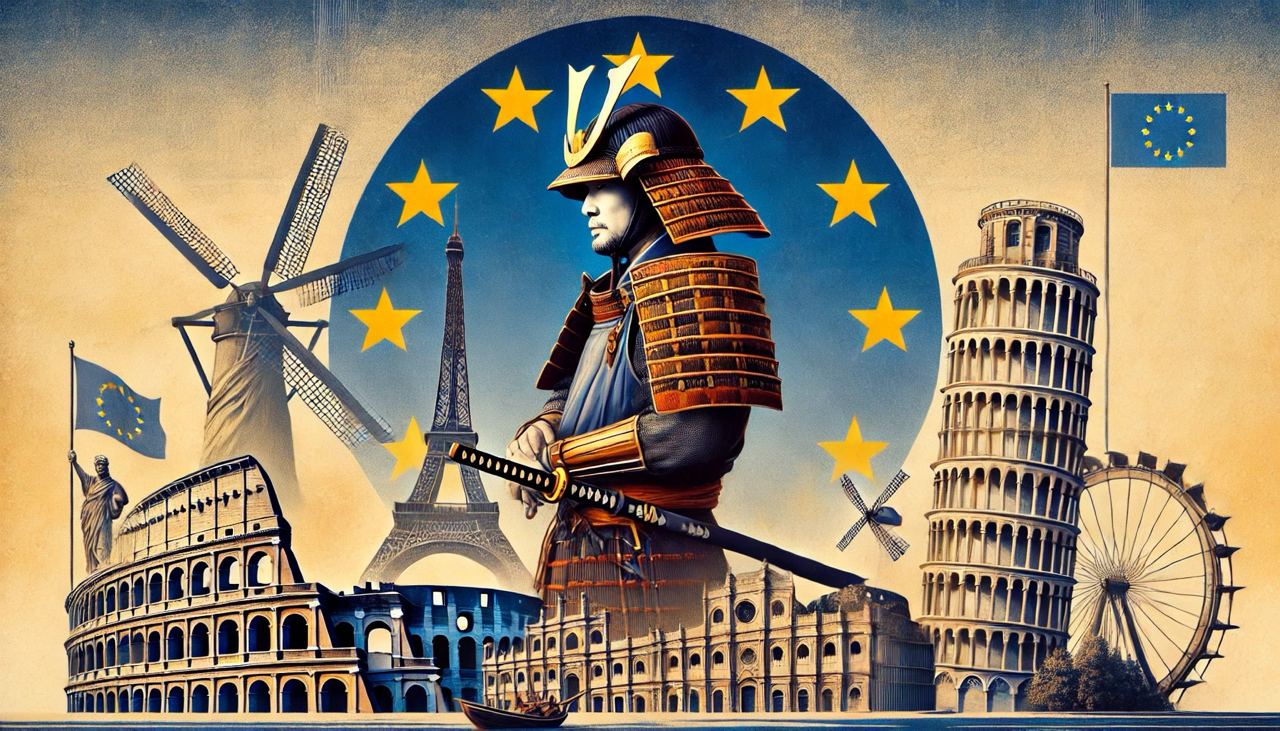Learn Trading for Free and Without Registration
An Online Glossary to Study Trading Independently
European Union: An Economic, Political, and Social Giant
European Union: Economic, Political, and Social Powerhouse

The European Union (EU) is a unique political and economic union comprising 27 member states. Established after World War II to promote peace and stability, the EU has evolved into the largest economic bloc in the world, exerting significant influence on global trade, politics, and economics.
Core Principles of the EU
The EU operates on several foundational principles aimed at ensuring cooperation, stability, and sustainable development:
- Free Movement: Goods, services, capital, and people can move freely across member states, fostering market and cultural integration.
- Single Market: Elimination of customs barriers and standardization of trade practices for seamless cross-border commerce.
- Common Policies: A unified monetary policy for Eurozone countries under the European Central Bank (ECB).
- Sustainable Development: Emphasis on environmental sustainability, social rights, and economic growth.
- Democracy and Human Rights: Protection of fundamental human rights and adherence to democratic values and the rule of law.
European Union in Numbers
- Population: 447 million (2023) — the third-largest population globally after China and India.
- Total Area: 4,233,255 km².
- GDP: $16.6 trillion (2022) — 15% of global GDP.
- Key Trade Partners:
- Exports: United States (19%), United Kingdom (13%), China (10%).
- Imports: China (22%), United States (12%), Russia (7%).
- Energy Dependence: Imports approximately 60% of its energy needs.
- Currency: Euro (used by 20 member states).
- Official Languages: 24 languages.
Economic Structure of the EU
The EU economy is diverse and balanced.
Key Economic Sectors:
- Services (70% of GDP): Financial services, tourism, IT, healthcare.
- Industry (25% of GDP): Automotive, electronics, pharmaceuticals, chemicals.
- Agriculture (5% of GDP): High-quality food production, winemaking.
Top Export Goods:
- Machinery and equipment (38%).
- Chemical products (17%).
- Automobiles and transportation vehicles (11%).
Top Import Goods:
- Raw materials, including oil and gas.
- Electronics.
- Food products.
Trade Partners of the EU
The EU actively engages with most major global economies.
- United States: The primary export market for the EU, including high-tech goods and automobiles.
- China: The largest supplier of electronics and industrial goods.
- United Kingdom: Remains a critical partner post-Brexit.
- Russia: Traditionally a key energy supplier (until 2022).
- Africa: Exports agricultural machinery and pharmaceuticals, imports natural resources.
Current Challenges and Issues Facing the EU
1. Energy Crisis:
Following the conflict in Ukraine in 2022, the EU faced a significant reduction in Russian gas and oil supplies, leading to skyrocketing energy prices.
- Dependence on Russian gas fell from 40% to less than 10% by 2023.
- The EU is diversifying energy sources by collaborating with Norway, Qatar, and the United States.
- Significant investments are being made in renewable energy and energy-saving initiatives.
2. Geopolitical Instability:
- The Ukraine conflict disrupted trade flows and raised food prices.
- Relations with China and the US fluctuate between cooperation and competition.
3. Economic Inequality:
- Northern EU countries (e.g., Germany, the Netherlands) have much stronger economies than southern nations (e.g., Italy, Spain, Greece).
- Supporting weaker economies increases the financial burden on the EU budget.
4. Demographic Challenges:
- An aging population threatens productivity growth.
- Immigration policies are crucial to addressing demographic imbalances.
The Euro: A Financial Pillar of the EU
The euro is used in 20 EU member states and is the second most significant reserve currency globally.
Factors Influencing the Euro:
- ECB Policy: Interest rate changes and stimulus programs.
- Economic Data: GDP, inflation, and employment within Eurozone countries.
- Global Events: Conflicts, pandemics, and natural disasters.
The Future of the EU: Opportunities and Prospects
-
Green Energy Transition:
The EU aims to achieve carbon neutrality by 2050, requiring substantial investments in solar, wind, and hydrogen energy. -
Technological Leadership:
EU countries are advancing artificial intelligence, quantum technologies, and the digital economy. -
Strengthening Global Influence:
The EU plans to increase the euro’s role as a reserve currency and reduce dependence on the US dollar. -
Trade Agreements:
Expanding trade agreements with Asia, Africa, and Latin America opens new markets for European goods.
Conclusion
The European Union remains at the forefront of the global economy, showcasing the power of integration and cooperation. Despite challenges, the EU is adapting to new realities by innovating in trade, energy, and technology.
Recommendation from Ronin Academy: To trade successfully with euro-based currency pairs, analyze ECB decisions, economic reports from EU countries, and global geopolitical events.


